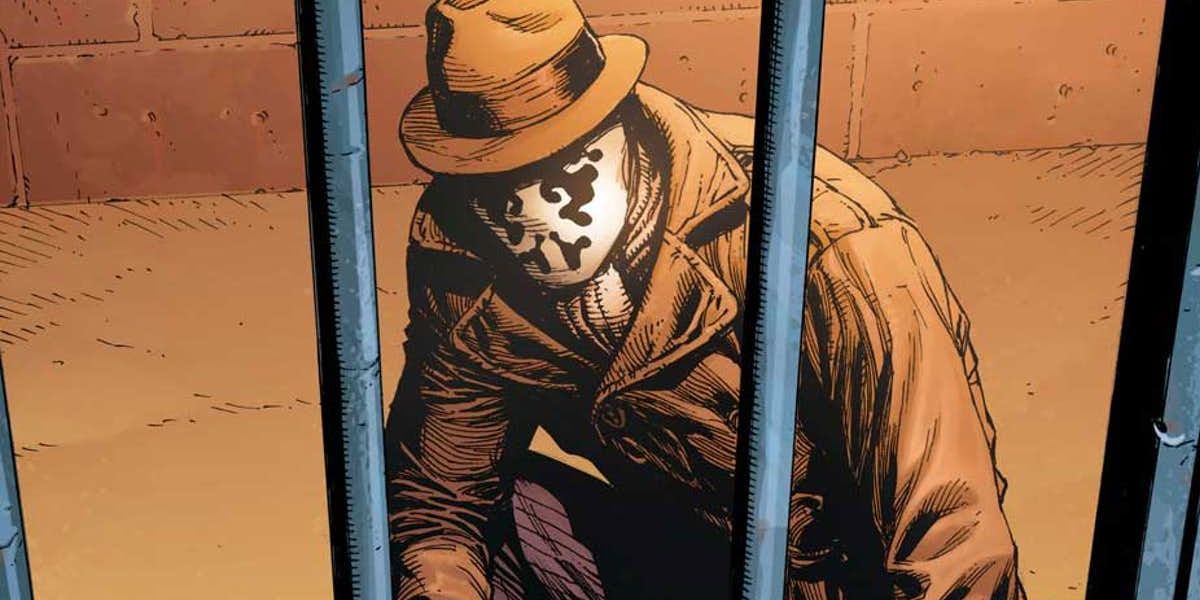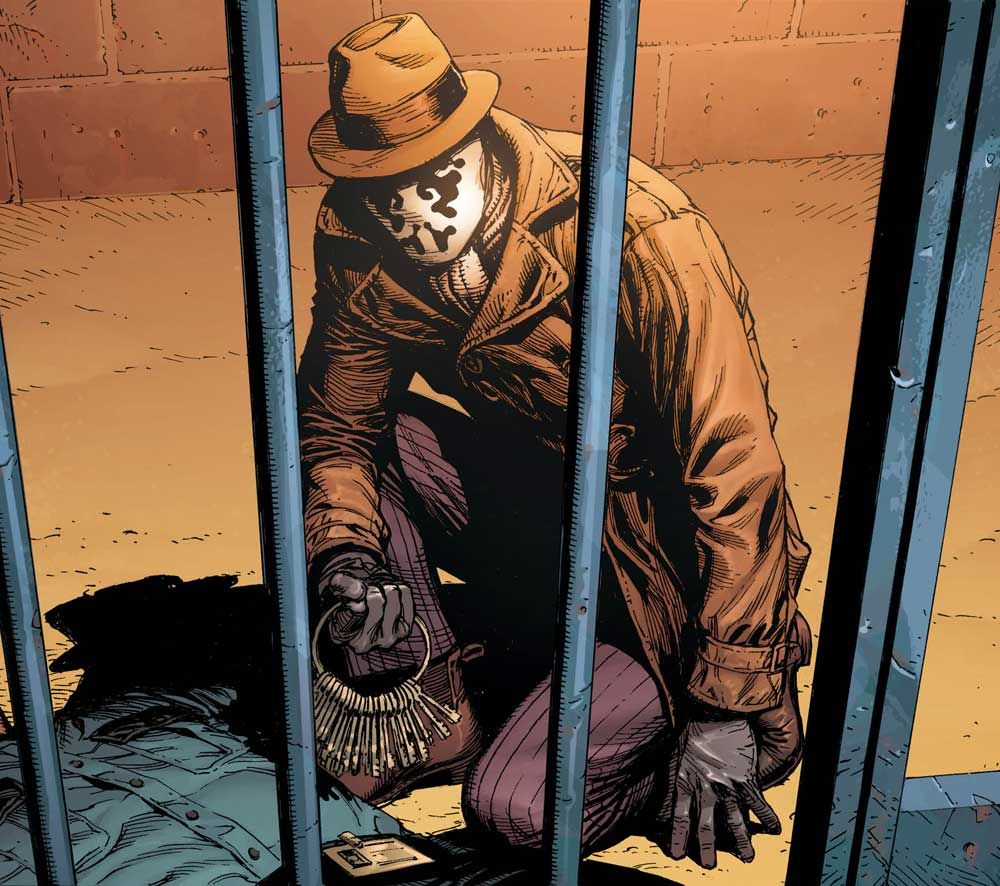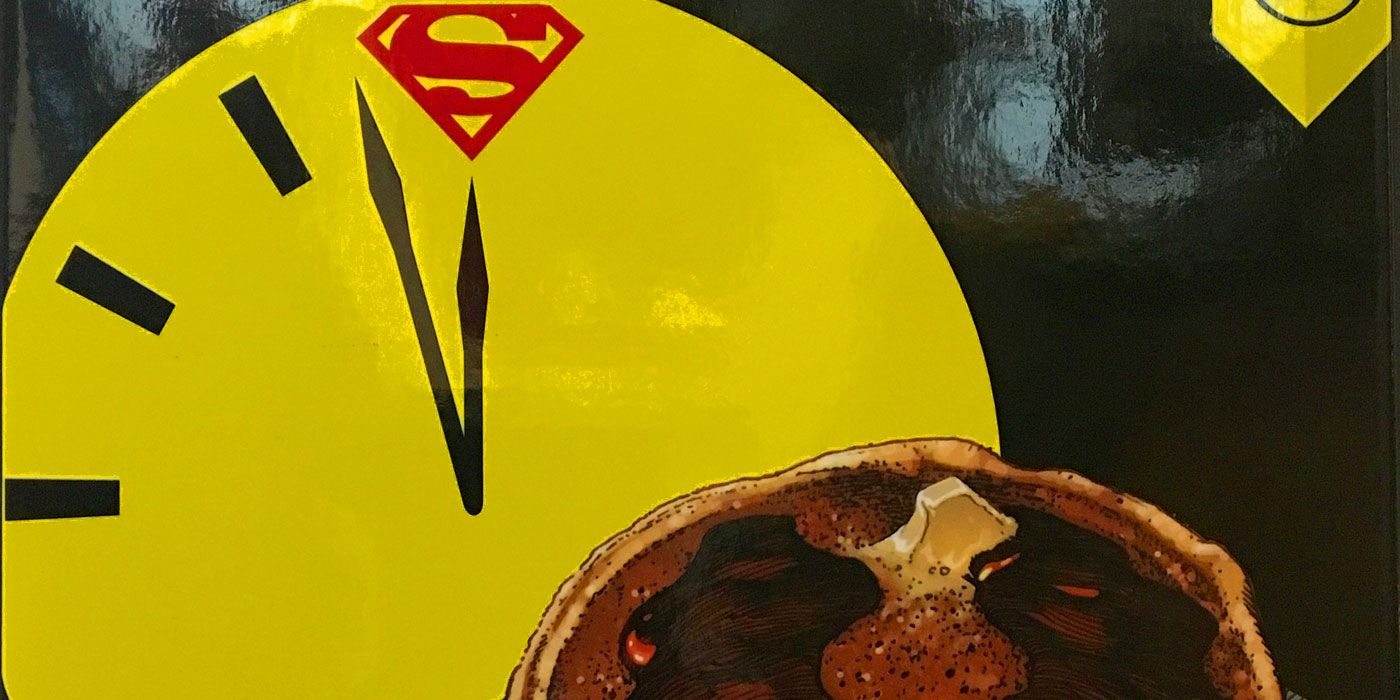WARNING: This article contains spoilers for DC Comics' Doomsday Clock #1, by Geoff Johns and Gary Frank, on sale now.
There's been a lot of mystery surrounding the release of Doomsday Clock, but now that the series has debuted, the veil can finally be lifted -- sort of. Anticipation has been running high ever since fans found out over a year ago that the Watchmen characters were set to make a splash in the DC Universe. Now, the payoff is finally upon us.
As early promotions and ads for the Geoff Johns and Gary Frank series were released, fans became privy to a shocking revelation: Rorschach, the fan-favorite conspiracy theorist and brutal masked vigilante, would make a return in the pages of Doomsday Clock. On one hand, it made perfect sense as the Question-inspired antihero was one of the driving forces of Alan Moore and Dave Gibbons' classic story. On the the hand, he was killed in a pretty definitive manner in Watchmen's final act.
RELATED: Doomsday Clock Trailer, Team, Release Date, And Every Update We Know
Johns and Frank have a daunting task ahead of them, one that will come under much scrutiny by fans of the original Watchmen series. Rorschach was undoubtedly a fan-favorite character, and his demise was one that was truly befitting of the character's arc. Some fans are understandably wary of the sequel series, dreading how one of their favorite character's death would be undone, or undermined. So how did Rorschach return, and does his resurrection alter the near-perfect and symmetrical ending of the original Watchmen?
The short answer to the second half of that question is no, it really doesn't hurt Watchmen's conclusion at all. Doomsday Clock begins very much in the Watchmen world, as the masses scream for Adrian Veidt's head, and it doesn't take long for readers to see Rorschach again, up to his old tricks of beating security guards up and scaring criminals who would rather stay in their prison cells than face him. The hat, the scarf, the long trench coat, the blotted mask -- it's all there. This truly is Rorschach returned to life, complete with a grumbling voice that speaks in incomplete sentences and a grim but poetic narration that comes in the form of a journal entry.
On the surface level, this is all Rorschach -- but there's also something off about him. Instead of beans, he prefers pancakes. He isn't certain what date it is, making his detailing of the issue's chain of events a bit unreliable. He's brutal to his enemies, yes, but he's also different. A bit warmer, perhaps, and less assured in his decisions. Before long, the truth is clear: Rorschach has returned, but Walter Kovacs, the man who was behind the mask, remains dead. Now, the man under the blotted mask is someone else entirely, as Rorschach himself is quick to point out. "Not same guy," he says. "Different." Then, just in case readers think Kovacs was just pretending to be someone else, Rorschach takes off his glove and instantly proves, without a doubt, that he is a different person by showing the color of skin. This Rorschach is not caucasian, like Walter was, but African American.
It would appear that Johns understands that Kovacs' death in Watchmen was something that shouldn't be touched or undone, that there was no logical way to bring him back to life without doing disservice to the character. But Johns also understands the power of a mask, and the power of what a character stands for. In Doomsday Clock #1, we see that the people recognize Rorschach. Whoever is under the mask knows the strength and the significance of the costume he wears, an awareness that will likely prove important not only to the immediate story, but also the world of the Watchmen as a whole.
RELATED: REVIEW: Doomsday Clock #1 is a Well-Crafted Watchmen Successor
Perhaps this broken world understands that it needs a Rorschach, just like the people of the DC Universe know that the world needs a Batman. This twist has just turned part of Doomsday Clock, which was partly billed as a sequel, into a story about legacy, not unlike DC's bigger Rebirth initiative. Now, the real mystery begins: Who is under the mask?



